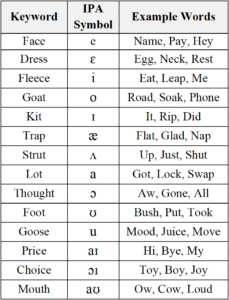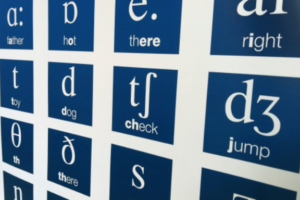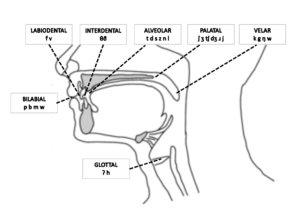Phonetics: What is IPA?
Phonetics: What is IPA?
IPA is a hoppy-style beer that is quite popular with beer drinkers who like an earthy, bitter taste. In the world of Speech Pathology, IPA also stands for the International Phonetic Alphabet.
It is a universal alphabet system to describe all sounds, or phonemes, in all languages around the world. Symbols for consonants and vowels help with broad transcription. For example, in English there is only one /t/ sound, so only one symbol is needed. For sounds that may have variations such as a tapped /t/ or aspirated /p/, there are diacritic markers, or diacritics, for narrow transcription.
Consonants and vowels are categorized by how and where they are produced in the mouth. These symbols, especially diacritics, do change over time as more languages and features are categorized. To date, there are approximately 107 segmental letters (consonants and vowels) and 44 diacritic markers. Let’s dive more into the features of consonants and vowels.
English Consonants
In General American English (GenAm), there are 24 consonant sounds. Consonants are categorized by place, manner, and voicing.
Place: refers to the articulators that work together to produce a sound. For example, /p, b/ are considered bilabials, meaning they are produced using your top and bottom lip, and /f, v/ are considered labiodental, meaning they are produced using your bottom lip and top teeth.
Manner: refers to how the air flows through the articulators. For example, /p, b/ are considered ‘stops,’ meaning that airflow is completely blocked by the lips, and /f, v/ are considered ‘fricatives,’ meaning that the lower lip and upper teeth partially block airflow.
Voicing: refers to the activity of the vocal folds in the voice box. When the vocal folds are apart and not vibrating, the sound is voiceless (p, f). When the vocal folds are together and vibrating, the sound is voiced (b, v).
English Vowels
All vowels are voiced, while about only half of English consonants are, and are most influenced by 3 distinctive features. The distinctive features are:
Jaw Height: The vertical axis refers to the jaw height. Think of the jaw as having 3 planes or levels of opening
- Slightly open (high)
- Moderately open (mid)
- Widely open (low)
Tongue Placement: The horizontal axis refers to tongue placement. There are 3 placements
- Front of mouth
- Central (middle of mouth)
- Back of mouth
Lip Roundedness: The horizontal axis also refers to lip roundedness. Lips are:
- Rounded
- Unrounded
There is one exception here. For the vowel /i/ (‘e’ as in green), the lips are pulled back, or retracted.
A good reference for vowels is the Standard Lexical Sets created by John C. Wells, in which he references two accents, General American English (GenAm) and Received Pronunciation (RP, a British dialect). Below is a chart for GenAm with the keyword, IPA symbol, and example words.

Use of IPA
Not all professional backgrounds learn IPA or use it consistently, and that is ok! IPA isn’t an easy shortcut. It takes critical thinking to describe what you hear. It should be an interactive dialogue with others because we all hear things differently the first, second, third time, and beyond when listening to a speech sample over and over. Your notes should answer this question “How do I want to communicate this to myself?” As one is exposed to more sounds/accents/dialects, there is increased understanding of all the IPA symbols and diacritics.
Additionally, some clients may be familiar with IPA and prefer to use it. The IPA symbols may be helpful at times, but don’t get bogged down with teaching the symbols if the client isn’t already familiar.
What symbols and diacritics do you use the most? What variations do you use your own shorthand for? Let us know in the comments below.
Resources:
Lim, Kari. 2022. Speaking With an American Accent: A Guide to General American English. Independently published.



Saved as a favorite, I love your blog!